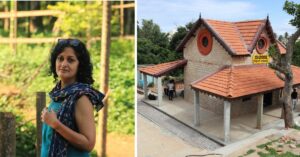This 100-Yo Heritage Fort in Kutch Is Home to a First-Of-Its-Kind CBSE School
In 1905, Krutarthsinh M Jadeja’s great-great grandfather, Thakore Sahib Verisalji Bawasaheb of Roha, built Darbargadh in Kutch. The family now offers a homestay, a farm stay experience and runs Kutch's first CBSE residential and co-ed school.

Title picture courtesy: Ipsita Paul.
The night quietens under the moon as the sky blue table comes out of the vintage dining hall. The chairs, candles and the crockery is laid out for the Gujarati flavours to shine through in every bowl. Krutarthsinh M Jadeja’s 85-year-old mother receives the guests with garlands, applies a teeka on their forehead, and says, “God bless you.”
“My mother has always welcomed the guests. It’s our tradition. She says that we must pray and dine together,” adds Krutarthsinh.
In an otherwise bleak Kutchi village, the sloped road bends to an arched gate fixed with iron nails. This was done to keep elephants and enemies from invading the property. Sitting on a mound, the small manor watches over the six generations that have lived here for 118 years. The bowed branches of Bougainvillea engulf the suites here and the jharokhas (the sitting windows protruding outwards from a building) articulate heritage fervour even from a distance.
Krutarthsinh, the ever-smiling host, is now taking care of this ancestral property historically known as the Darbargadh in Devpur village which is 30 km from Bhuj. It is now known commercially as the Devpur Homestay.
Apart from a few rooms still inhabited by the Jadeja family, the vintage rooms are now rewriting new stories with guests having access to various suites in its Mardana and Zenana (separate male and female quarters as used to be the norm back in the day) quarters.
Today, the property also houses a CBSE school on the grounds for students up to class 10.
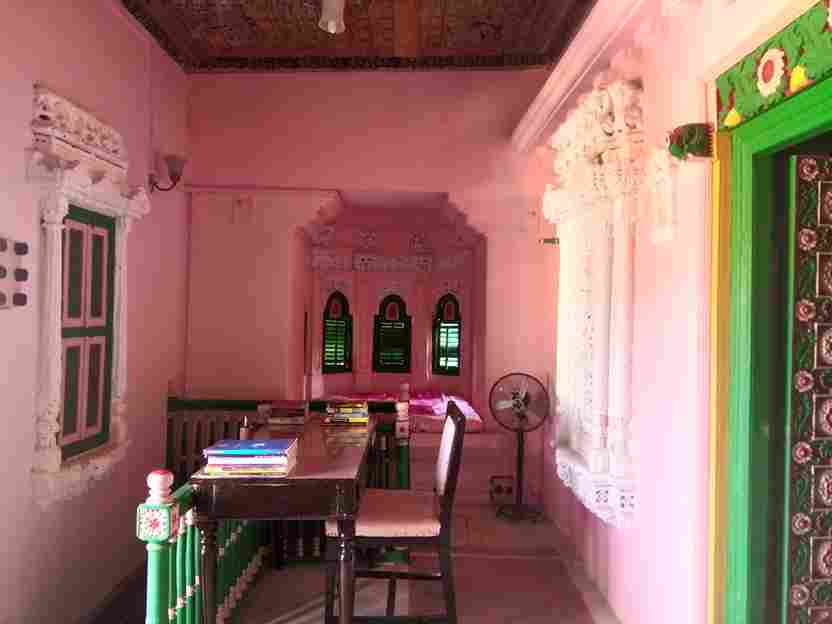
Standing the test of time
In 1905, Krutarthsinh’s great-great grandfather, Thakore Sahib Verisalji Bawasaheb of Roha, built Darbargadh for his younger son, Kumar Shri KaranSinhiji.
“Roha was the largest principality, the largest jagir of Kutch, with 52 villages in five talukas. We are its descendants and were given seven villages, among which, Devpur was the most important,” explains Krutarthsinh.
It was built in the classically-ornamented Kutch-Roha style of architecture of the Prag Mahal – the royal palace of Kutch. Using local sandstone, limestone, lime mortar, and wood, three years went into the making of Darbargadh. The place is replete with porticos, courtyards, stucco pavilions and pillared halls.
Later, in the aftermath of the 1956 Anjar earthquake, Captain Thakore Shri Ranjitsinhji of Devpur refurbished the structure. The Bhuj earthquake of 2001 damaged over one million structures, including several historical buildings of Kutch.
“There are at least 85 palaces and forts in Kutch recorded and we were possibly one of the lone survivors of the earthquake back then,” Krutarthsinh added.
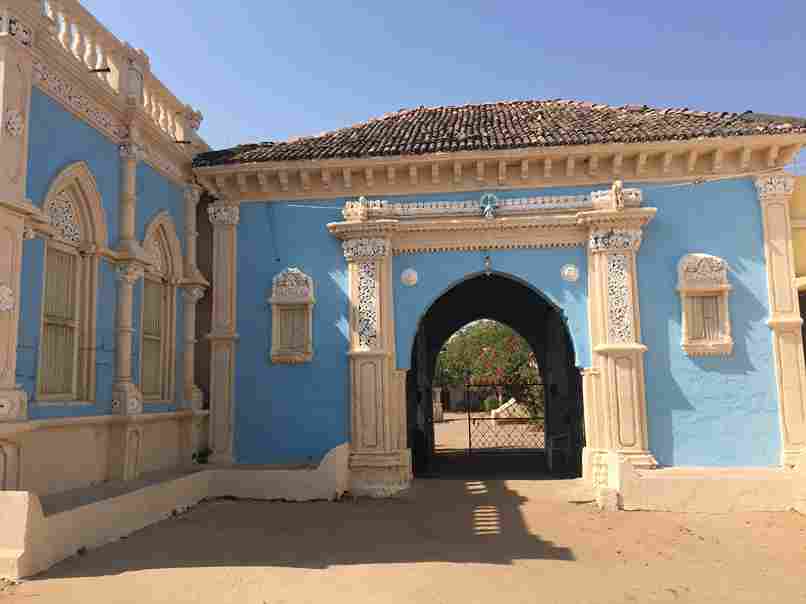
But how did Darbargadh become a homestay?
On a family holiday during Diwali 2007, Krutarthsinh and his wife, Nitu Bharti, shared a dining table with a French couple. “We were living in the Madhya Pradesh tourist bungalow in Mandu and assisted the couple as their vehicle had broken down. We got to talking and discovered that they were avid bird watchers. They visited and stayed with us in Kutch in December,” he recounts.
“They mailed us in 2008 saying that they would like to stay with us, but only if we accepted something in return. I agreed and left an envelope on their desk and was pleasantly surprised to find that they had left Rs 12,000 for their 4-day stay with us. That’s how Devpur Homestay got conceived and we now enjoy hosting,” Krutarthsinh explains.
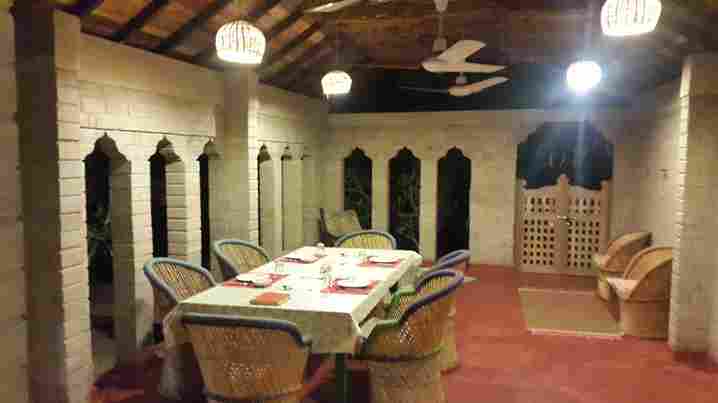
Combining luxury and history in heritage tourism
The Devpur Homestay is a collection of various architectural styles and boasts of statement pieces. Three of the rooms here have Swedish false pine ceilings painted with natural dyes.
One of the suites here, Sorthamba, is a room with 16 pillars and cross-vaulted arches. “It was used earlier by the men of the family and is in the Mardana section of the house,” explains Nitu.
The lavender pillars arch in high-ceilinged roofs, masquerading a very Gothic style of architecture. Some of the chandeliers are from Belgium and some were made in the Ram Singh Malam style, who was a mid-18th-century craftsman commissioned to work in Kutch.
Next, the Zenana opens up to the Zenana Dodi, the entrance to the women’s pasture. Veiled and suppressed in the ancient practice of purdah, the women of the household would witness the festivities of the courtyard from these jharokhas.
“The house will take you back to 1905 and is very precious to us,” Nitu adds.
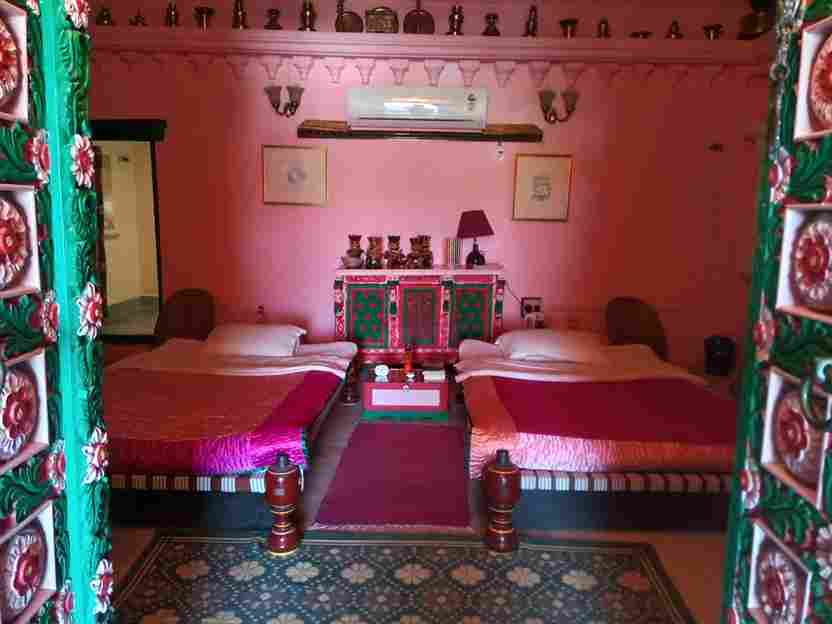
The overhanging stone-enclosed balconies have green windows as they narrow down in intricate tiers. The inside of the room is decorated with Raja Ravi Varma’s Chromolithograph pictures and paintings created by the family. A 150-year-old dhol (drum) adorned with Kutchi lacquer work is also kept in the room which comes stocked with local Kutchi camel and goat-wool duvets.
The arms from yesteryear are mounted on the wall, only needed ceremonially during Dussehra celebrations.
“It used to be called the Juna Mehdi (old room) earlier but since it is coloured pink, we changed the name to Gulabi Mehdi. This is one of the only Mehdis left in all of Kutch. We restored this room as it was after the 2001 earthquake,” explains Nitu.

Room for community growth
The White Eagles School built on the grounds of the property is the first CBSE residential co-ed English medium school in Kutch. Teaching up to class 10, the school was started in 1994.
“My late father, Mahipatsinhji, was a school teacher. When he retired as the principal of Hyderabad Public School in Begumpet, he had the opportunity to meet Shri Arvind Singh Mewar of the Royal House of Mewar,” narrates Krutarthsinh.
“Shriji offered every assistance to my father should he wish to join the hospitality sector with Darbargadh. Instead, my father decided to start the school,” he explains.
The elementary school’s classes are held two furlongs away from Darbargadh on a 12-acre organic orchard named Vijaya, sheltering almost 1,000 Kesar mango trees.

They grow tomatoes, brinjal, gourds, okra, methi, choli falli, gavar falli, onion, coriander, mango, Chikoo, and coconuts. These vegetables are used in the meals prepared for both the school and the homestay for two days a week. The rest comes from the village market.
‘In Kutch, the tourist season is less than one-third of a year. Though tourism has increased in the recent decade, there was once a gap between the demand and supply, which the tourism department of the state tried to bridge with seasonal camps near the Rann of Kutch, and at times in Mandvi. Unfortunately, the pricing is not fair,” Krutarthsinh says.
He goes on, “Seeing the premium that a guest is paying to several hotels and resorts near the Rann, Bhuj, Mandvi, and Dholavira, going small, feasible and viable with homestays is the answer at the moment in my opinion.”
The Darbargadh of Devpur is now also listed as a member of the Indian National Trust for Art & Cultural Heritage (INTACH) for its architectural and historical importance. If you found our stories insightful, informative, or even just enjoyable, we invite you to consider making a voluntary payment to support the work we do at The Better India. Your contribution helps us continue producing quality content that educates, inspires, and drives positive change. Choose one of the payment options below for your contribution- By paying for the stories you value, you directly contribute to sustaining our efforts focused on making a difference in the world. Together, let’s ensure that impactful stories continue to be told and shared, enriching lives and communities alike. Thank you for your support. Here are some frequently asked questions you might find helpful to know why you are contributing?

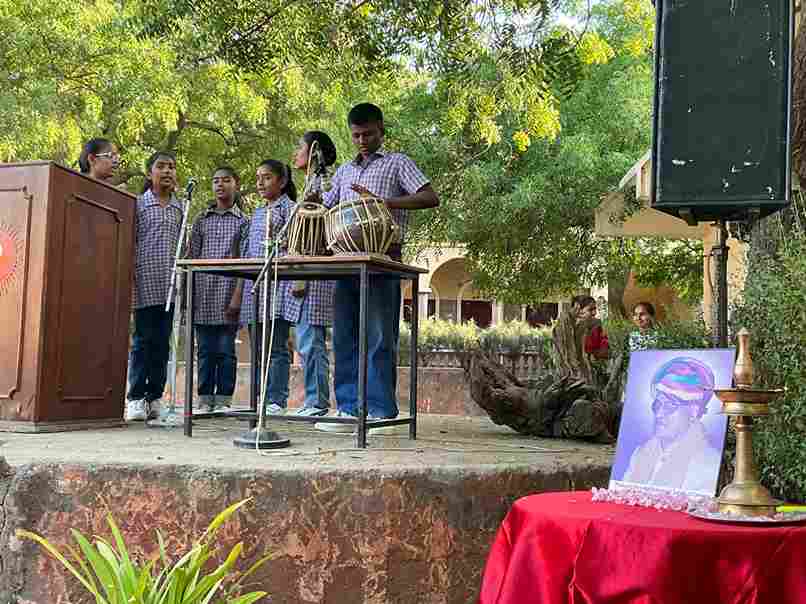
Authored by Ipsita Paul.
Edited by Padmashree Pande.
This story made me
-
97
-
121
-
89
-
167




